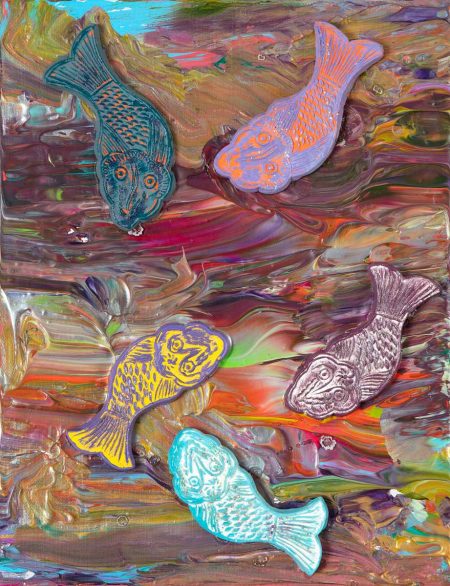Kate Oh’s Gallery’s new exhibition, The Korean Archetype, on view from March 1 until March 11, 2022, introduces the stridently feminist work of Miky (Yoohyun) Kim to a wider audience. I characterize Kim’s work as “stridently feminist” even though Kim is not interested in veridical or representational indices that directly cull femininity nor straightforwardly espouse an appraisal of masculinity. Rather, Kim’s is a subtle feminism, and, as indicated by the eponymous title, one uniquely tethered to Korean visual culture and history. Thus, to truly appreciate Kim’s work, we have to understand that her pieces are not simply presenting us with visually pleasing abstraction but are indirect references to feminized labor as situated in the Korean context/history.
Works entitled Autumn, Ways to Happiness, Path of Flowers, and Summer feature variegated patches of color stitched together. In Autumn, for instance, we are privy to a quilt-like tableau, a latticework of rectangles, including verdant green striped with flaxen yellow, purple and white lined gingham, and checkered crimson with blue X-shapes bisecting the corners. These small rectangles cover the entirety of the canvas, forming a motley kaleidoscopic map. The Ways to Happiness similarly uses the stylistic motif of repeated pattern, but this time uses the figure of the fish while also introducing a background plane and negative space. Plum-cherry fish coil and crimp their tails, the negative space allowing for dimensionality such that a slight shadow can be made out between the fishes’ tails and the flecked green-gray background. Rather than recall the sea, Kim’s background looks like a sidewalk darted and layered with colored chalk. The fishes’ detailed scales and gills can be made out, faintly etched with great precision. Like Autumn, Path of Flowers fills most of the canvas with tile, but these are flower-like circle pieces of tile rather than rectangles. Layered and stratified like luminous scales, these circles remind the viewer of unfolded umbrellas gazed upon from an aerial view. The circles are, like the rectangular tiles featured in Autumn, brilliantly detailed: lilac and gold lines unfold beside mauve-periwinkle whirligigs. Summer‘s palette is lighter, consisting of a network of leafy-green, cyan, and turquoise quilt-like patches. Each work is simply mesmerizing to gaze upon.
But what, exactly, do these tiles represent? Contra Western art history’s bastion Modernist movements—as exemplified by De Stijl, Concrete Art, and abstract expressionism—the geometric motifs in Kim’s work are socio-politically poised, looking inwards at feminized labor in Korea. Before progressing further, it is critical to understand what, exactly, feminized labor as a concept means. Traditionally, housework—i.e., the labor undertaken by so-called “stay-at-home wives” (but, critically, also daughters)—has been understood as “feminized,” and with the exception of outlier matriarchical societies, this has been the dominant mode of labor division in much of the world. Because of the distinction sociologically upheld between “male bread-winners” and “stay-at-home women” being such a dominant, if not near universal, division throughout history, it can be understood as a structural feature. That is, “feminized labor” is a structural feature not only in the contemporary U.S., but all societies that have upheld this division. This division means treating certain kinds of work commonly associated with stay-at-home mothers (i.e., cleaning, cooking, housework, etc.)—as categorically distinct from the kind of work that the bread-winning men undertake; the latter understood to count as “genuine labor” but the former disqualified from this category. Contemporary feminist scholars like Judith Butler and Donna Haraway have thrown a light on how this occupational segregation operates, with Haraway noting that:
“[t]o be feminized means to be made extremely vulnerable; able to be disassembled, reassembled, exploited as a reserve labor force; seen less as workers than as servers; subjected to time arrangements on and off the paid job that make a mockery of a limited work day; leading an existence that always borders on being obscene, out of place, and reducible to sex” (D. Haraway, “Cyborg Manifesto,” Simians, Cyborgs, and Women, NY: Routledge, l985, 166).
Notably, with women more widely entering the workforce in the mid-20th century (with the classic example being the U.S. opening up places of employment to women during World War II), “feminization” has also seeped into the workplace. Hence, “feminization” can be used to describe how the work that women have come to take up within the economic sphere (taking up jobs often previously held by men) has also become re-structured so that it downgrades this professional work, and in turn lowers the pay level and satisfaction of the job.
This theme of “feminized labor” is critical to the political stance that Kim’s work espouses. All of Kim’s aforementioned pieces feature tile roofs, which colorfully replicate traditional Korean roof construction. While these tile roofs were not necessarily constructed by women, the tiles themselves are indices of domesticity, the home, and upkeep—i.e., the “feminized labor” of the aforementioned maternal figure (or daughter), who is expected to clean and cook for her husband/children, and to maintain upkeep in the house. An important facet of Kim’s practice is her paying deference to the centuries of anonymous women who endured agony and abuse at the hands of patriarchal customs that not only treated “feminized labor” as disparate from the labor of money-earning men but also the women who suffered physical and psychological abuse, which they were expected to keep silent about. Hence, the repeating motif of the rectangular tile or angled fish is an allegory to the unidentified Korean women—each tile singular but, simultaneously, speaking to a structural group with a common history.
Consequently, Kim’s work has a political vim to it that we do not find in much of Western art history that has, since the era of Abstract Expressionism, often deracinated abstraction from politics. Famously, following the late 1940s, Abstract Expressionism was championed and bolstered by both the CIA and some of the most famous US art intuitions as a repudiation of the Soviet Union’s explicitly political, and representational, “Socialist Realism.” It was thought that abstraction was explicitly apolitical and this style soon became predominant in the US, if not most of the West. However, Kim’s work is a direct counter to this stance, as it illuminates how abstraction can be instrumentalized for the sake of political critique. That Kim does this tactfully and evenhandedly is a testament to her artistic prowess, one that we would be wise to laud.
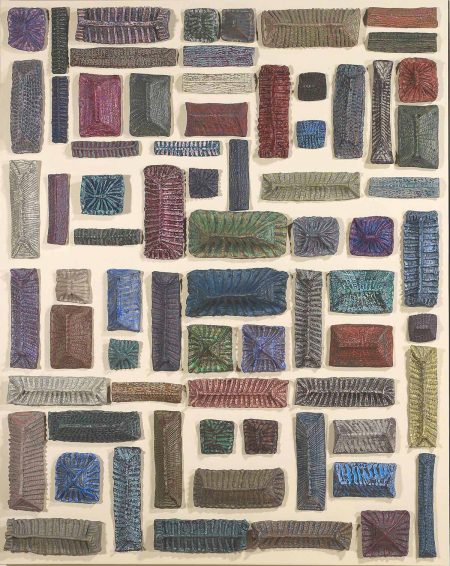
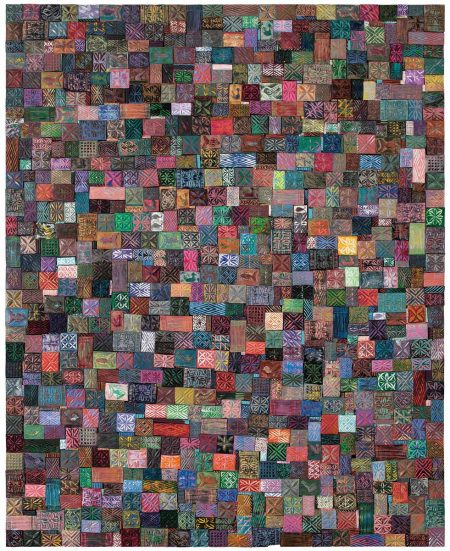
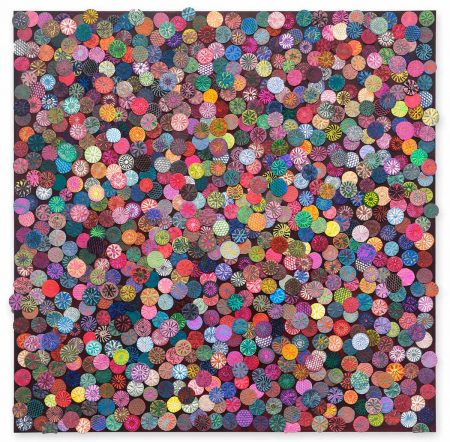
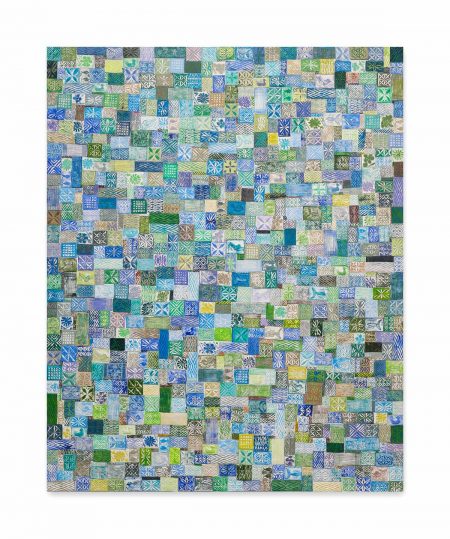
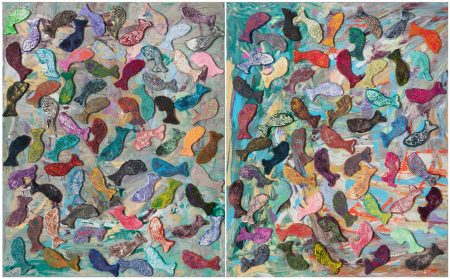
–Ekin Erkan
